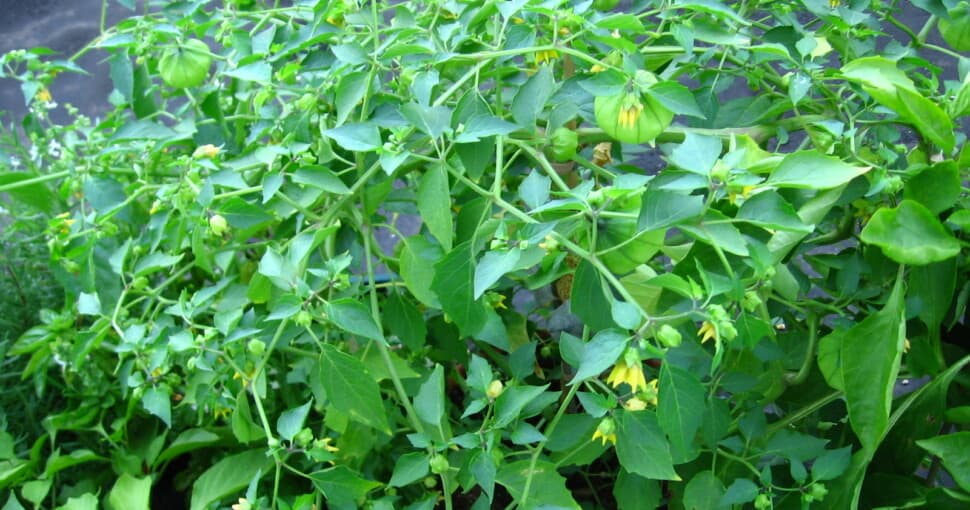The tomatillo plant, native to Central America and Mexico, has a rich history and was a domesticated crop in America before the arrival of Europeans. Mayan and Aztec cultures used the tomatillo or husk tomato long before tomatoes. There are even fossil remains of wild tomatillo species that are now extinct that were traced to Argentina.
Contents
Tomatillos (Physalis ixocarpa) are part of the Solanaceae plant family, which includes important food crops like tomatoes, potatoes, peppers, and eggplant. You may also hear this family of plants referred to as nightshades. This plant family includes many food plants but also some very toxic ones, like the Atropa belladonna (Deadly Nightshade).
Tomatillos are naturally perennial but are planted as annual crops in a commercial setting. In warm climates, tomatillos or Mexican husk tomatoes can grow to six feet tall and almost as wide. A tomatillo plant can produce between sixty and two hundred fruit. Fruit is harvested at different stages of ripeness, depending on the intended use.
The fruit of a tomatillo plant is enclosed in a papery capsule or casing. While fruit may vary in color and size depending on the variety, a tomatillo fruit fills the casing completely and often breaks the casing when ripe. The unripe tomatillos’ husks start out green. They then turn brown and split as the fruits ripen. Tomatillo fruit varieties differ in color and include ripe green, yellow, cream, and purple fruit.
While tomatillo plants look very similar to the closely related gooseberry and several other plants in the physalis genus, there are many ways to tell them apart.
1. Mexican Ground Cherry
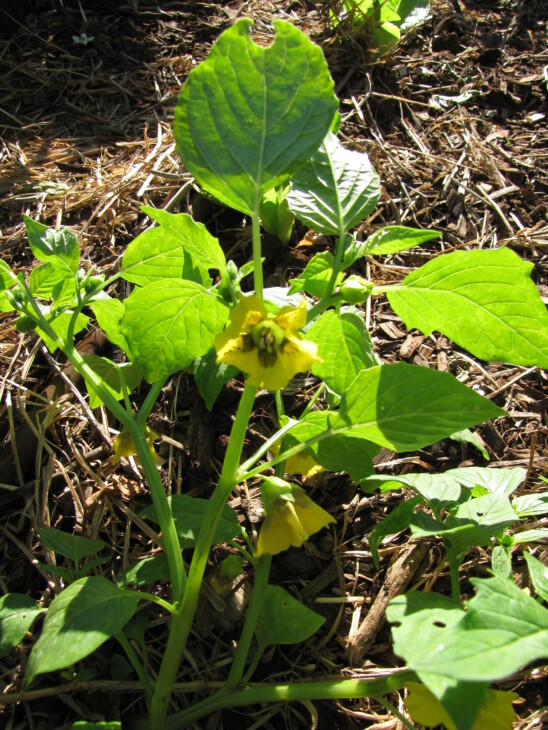
Mexican ground cherries (Physalis philadelphica) are also called tomatillos or wild tomatillos. The Mexican ground cherry is also planted as an annual crop for use in salsas and other South American dishes. Ground cherries have escaped cultivation and can also be found growing wild in areas of North America.
Mexican ground cherry plants grow roughly three feet high and almost four feet wide. As with tomatillos, the leaves are oval and mature leaves are almost hairless, but young leaves have a short hair covering.
Mexican ground cherry fruit looks the same as tomatillos, and the mature fruit is usually purple. As with tomatillos, the husk casings are green when the fruit is unripe. The husk turns papery and brown in color and tears open when the fruit is ripe.
Tomatillos reproduce via seed, relying on birds or water to spread the seeds. Seeds can lie dormant for some time, but when soil is tilled or disturbed, this triggers germination for Mexican ground cherries.
2. Cape Gooseberry
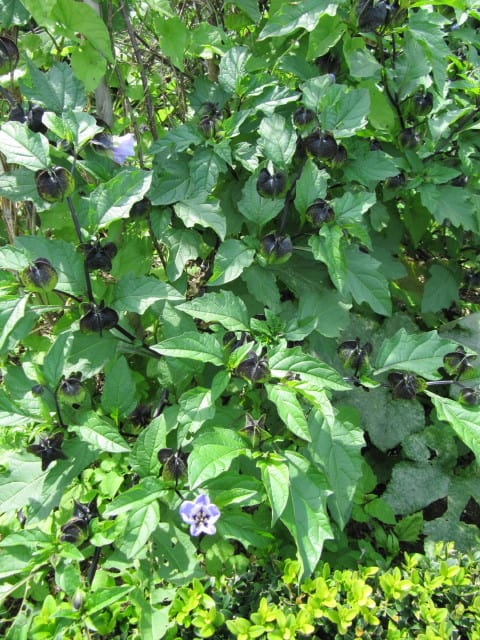
The Cape gooseberry (Physalis peruviana) is known as goldenberry and Peruvian ground cherry. This perennial plant is native to Peru, Colombia, and Ecuador and can be found in writings of the early Inca Empire. In the late eighteenth century, gooseberries spread to England, and since then, this popular fruit has spread to all tropical and temperate regions of the globe.
Cape gooseberries are close relatives of the tomatillo but not related to true gooseberries in the Ribes genus. Cape gooseberry shrubs can grow as tall as five feet and sprawl as wide. The leaves of Cape gooseberries are heart-shaped and covered with fine hairs.
Cape gooseberry flowers are light yellow bell-shaped and drooping, with brown spots near the center, just like a tomatillo. The fruit also develops in a papery calyx as a tomatillo does, but the berries ripen to a rich orange color. If the berries are not removed from the papery casing after picking, they can remain fresh at room temperature for more than a month.
3. Ground Cherry
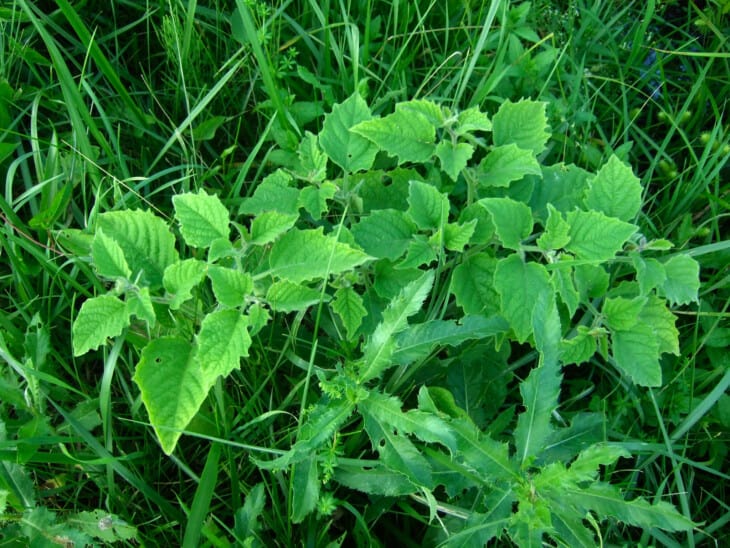
Ground cherries (Physalis pruinose) may be more familiar by names like Cossack pineapple or pineapple ground cherry. The ground cherry is native to Central America and Mexico but has spread to temperate and tropical regions around the globe. Ground cherries grow as perennial plants in tropical regions but as annual plants in areas with colder winters.
Ground cherry plants look very similar to their close relative, the Cape Gooseberry. The shrub’s size sets it apart from the gooseberry, as it only grows to a height of sixteen inches. Like tomatillos, you need to plant a few ground cherry plants in order to achieve good pollination, as individual plants are self-incompatible. Self-incompatibility means they will not set fruit if pollinated by pollen from the same plant.
Ground cherry’s taste differs from tomatillos and gooseberries. The taste is described as a combination of pineapple and brown sugar. Like tomatillos, the ground cherry fruit is high in vitamins A, C, and niacin.
4. Virginia Groundcherry
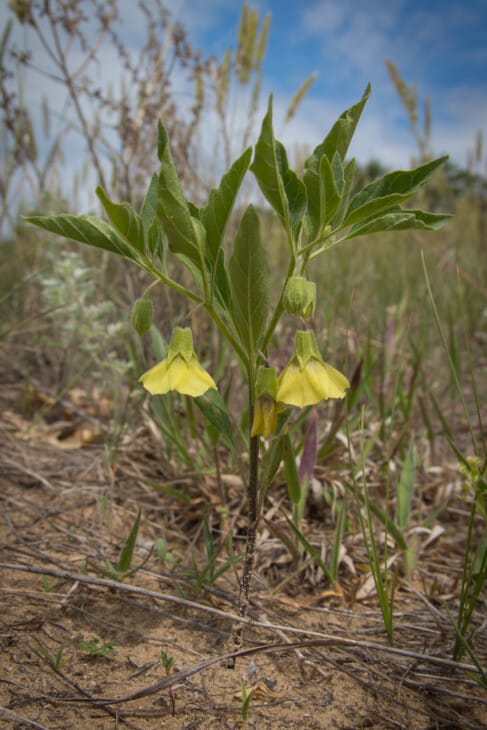
Virginia groundcherry (Physalis virginiana) is a perennial member of the Solanaceae family, like the tomatillo but is not planted as a food crop. Instead, Virginia groundcherry is considered to be a weed. Virginia groundcherry is native to North America and parts of Canada, where it is often a hindrance in farmed crops like soya.
Virginia groundcherry plants are very small compared to tomatillos, growing between eight and twelve inches high. Virginia groundcherry leaves are more lance-shaped than tomatillo leaves and have a stiff hair covering on some parts of the plant. While tomatillo plants propagate via seeds, the Virginia groundcherry spreads aggressively via its fibrous rhizomes.
As with most nightshade plants, all parts of the Virginia groundcherry plant are inedible except for the ripe fruit. Unlike the variety of fruit colors found in tomatillos, the Virginia groundcherry ripens to a deep orange, almost red color.
5. Apple Of Peru
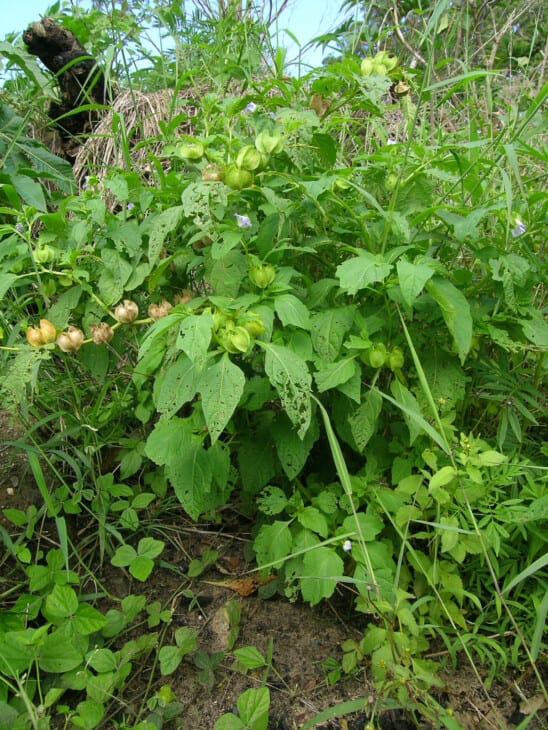
Apple of Peru (Nicandra physalodes) is also known as the shoofly plant, and due to the delightful purple or blue blooms, it is often planted as an ornamental plant. Apple of Peru is native to Areas of South America but has been introduced to many tropical and subtropical regions around the globe.
Apple of Peru blooms are upward-facing, unlike tomatillo blooms, and are one to two inches across. These flowers only remain open for one day, but the plant produces successive flowers daily for up to three months. The lantern-like green pods form after the flowers die back and eventually turn brown, as does the ripe fruit.
Apple of Peru shrubs grow between two and five feet tall and have been used as an insecticide by adding the juice from the leaves to milk and setting it out as bait for flies. Unlike tomatillos, no part of the apple of Peru is edible. While not edible, the plant is used in Tibetan medicine as an antibiotic and anti-inflammatory.
6. Chinese Lanterns
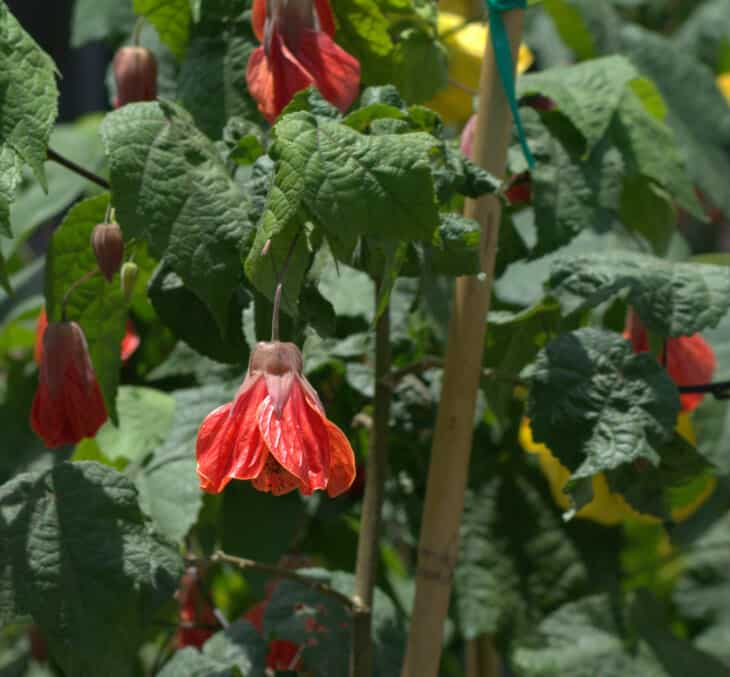
Chinese lantern plants (Alkekengi officinarum) are also called strawberry ground cherry, bladder cherry, or Japanese lantern. Unlike its distant relative, the tomatillo, Chinese lantern plants are well able to manage cold weather. They are even hardy to temperatures as low as -4 °F, which likely accounts for its other common name, the winter cherry.
Chinese lantern plants are most frequently grown for the unusual and brightly colored bladders or calyxes that cover the fruit. Chinese lanterns grow one to two feet tall and have beautiful heart-shaped leaves. As with tomatillos, the flowers are bell-shaped, five-lobed, and roughly a half-inch across. The fruit berries are not edible and are much smaller than tomatillos.
Chinese lantern calyxes are about two inches tall and the same width. The papery coverings mature to deep orange. These lantern-like calyxes make the Chines lantern plant an excellent decorative shrub. Chinese lanterns propagate via their rhizomes and can spread very vigorously. To prevent the unwanted spread of this unusual perennial, you should plant Chinese lantern plants in planters or containers.

